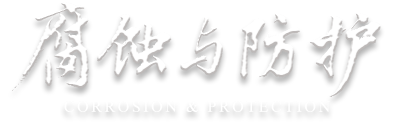高铁位置对埋地管道干扰影响规律
Influence Law of High-Speed Train Position on Buried Pipeline Interference
-
摘要: 高铁与管道交叉并行时,其供电系统会对管道产生交流干扰,造成管道腐蚀甚至击穿防腐蚀层。由于列车处于持续运动的状态,管道上的交流干扰是不断变化的,这给干扰缓解的设计带来了困难。采用数值模拟的方法研究了高速列车位置对管道的影响。结果表明:(1)管道上的交流干扰主要由铁轨内的电流产生,由于大量电流从铁轨泄漏到大地,产生“电流不平衡”。(2)列车从TPSS至AT2的运行过程中,交流电压峰值出现在各AT段的起点、终点和中间。(3)由于交叉点的存在,以及CW, AF,轨道之间的“位置不平衡”,交流电压峰值也会出现在交叉点处。(4)管道上的交流干扰随铁轨泄漏电阻增大而减小,这是因为随着铁轨泄漏电阻增大,铁轨泄漏到大地的电流减少。对北京地区一条实际输气管道进行了现场测试。结果表明,现场实测的管道交流电压与计算值基本吻合。Abstract: When high-speed rail intersects with pipelines in parallel, its power supply system will cause AC interference to the pipelines, leading to pipeline corrosion and even breakdown of the anti-corrosion layer. Due to the continuous movement of the train, the AC interference on the pipeline is constantly changing, which poses difficulties for the design of interference mitigation. The influence of high-speed train position on pipelines was studied using numerical simulation methods. The results show that: (1) The AC interference on the pipeline is mainly generated by the current inside the rail, and due to a large amount of current leaking from the rail to the ground, a "current imbalance" occursed. (2) During the operation of the train from TPSS to AT2, the peak AC voltage occurred at the starting, ending, and middle points of each AT section. (3) Due to the presence of intersections and the "positional imbalance" between CW, AF, and tracks, peak AC voltage could also occur at intersections. (4) The AC interference on the pipeline decreased as the rail leakage resistance increased, because as the rail leakage resistance increased, the current leaked from the rail to the ground decreased. (5) On site testing was conducted on an actual gas pipeline in the Beijing area. The measured AC voltage of the pipeline on site was basically consistent with the calculated value.

 下载:
下载: